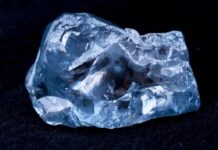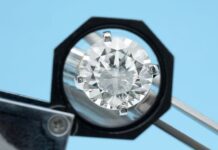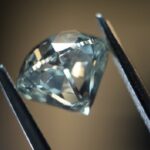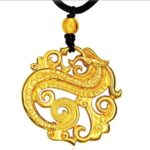A natural fancy dark greyish-blue diamond, the Hope diamond is one of the most famous in the world. Photo by Robert Weldon © GIA. Courtesy of Smithsonian Institution.
Blue diamonds are renowned as one of the rarest of fancy colour diamonds mainly due its formation and exceptional hue. A new industry research shows blue diamonds may get their colour from a surprising source: The element boron.
According to a new research featured on the cover of international scientific journal Nature, blue diamonds form at extreme depths – approximately four times deeper than most diamonds. The element boron, contained in the floors of ancient oceans carried deep into the earth’s mantle by the movement of tectonic plates, supplies the diamond’s blue colour.
This was the first study to examine and identify the mineral inclusions in very rare and valuable blue diamonds. Analysing those inclusions demonstrated that the diamonds formed at great depth in the presence of sunken, or “subducted,” ancient oceanic tectonic plates.
“Blue diamonds like the famous Hope diamond have intrigued scientists for decades, but the rarity and high value of these gems and their near lack of mineral inclusions have been major hurdles to research,” Gemological Institute of America (GIA) research scientist Dr. Evan Smith, the lead author of the Nature article, was quoted as saying in a GIA press release. “The opportunity to study these rare diamonds at GIA gave us insight to their incredible origin.”
Blue diamonds, also known as Type IIB diamonds, derive their colour from minute quantities of boron. The study reveals that blue diamonds originate from depths reaching 410 miles (660 km) or more into the earth’s lower mantle, where boron is scarce.
An extended abstract of the paper is available on GIA.Edu.
News Source : jewellerynet.com
Disclaimer: This information has been collected through secondary research and TJM Media Pvt Ltd. is not responsible for any errors in the same.



























